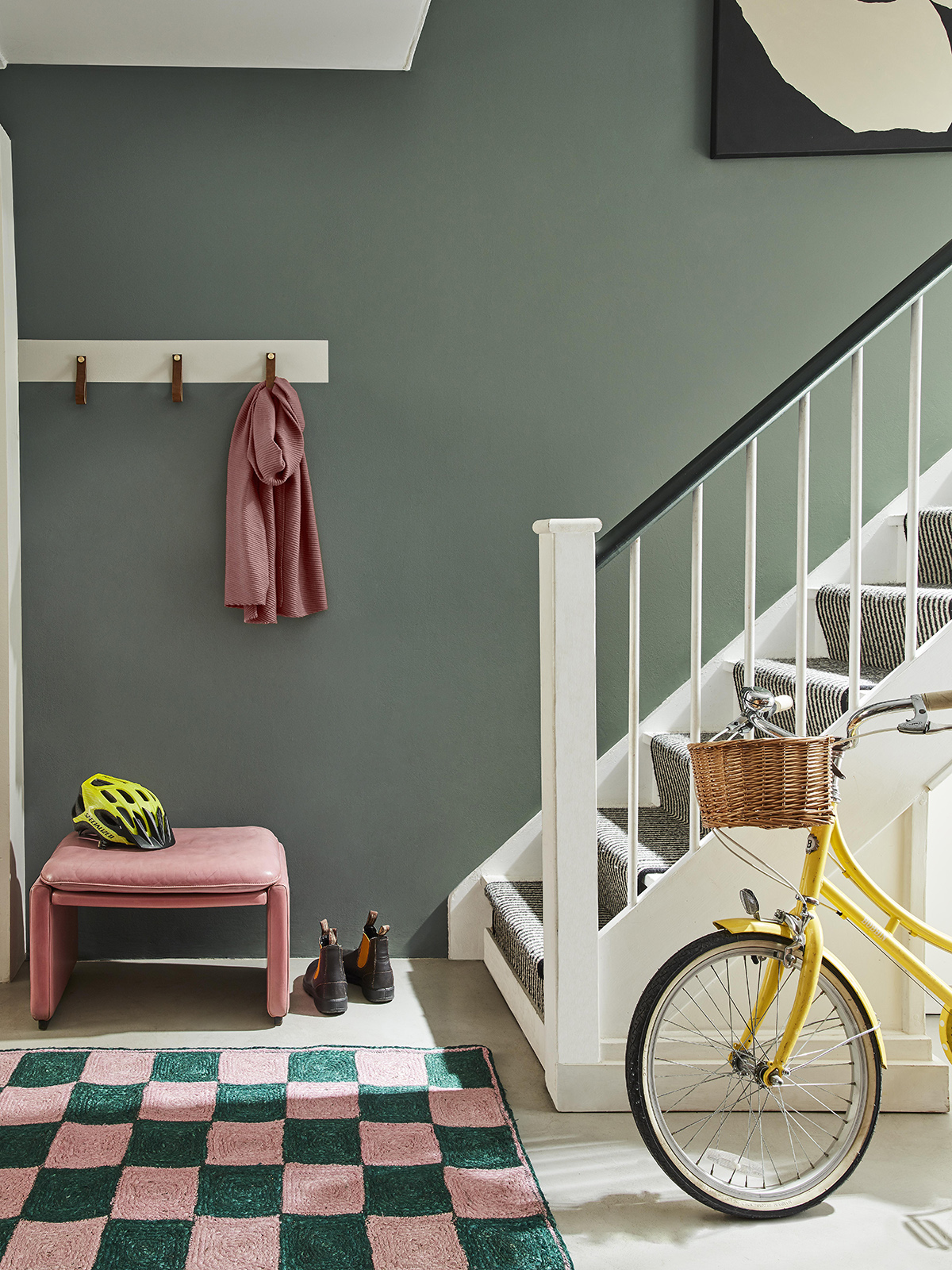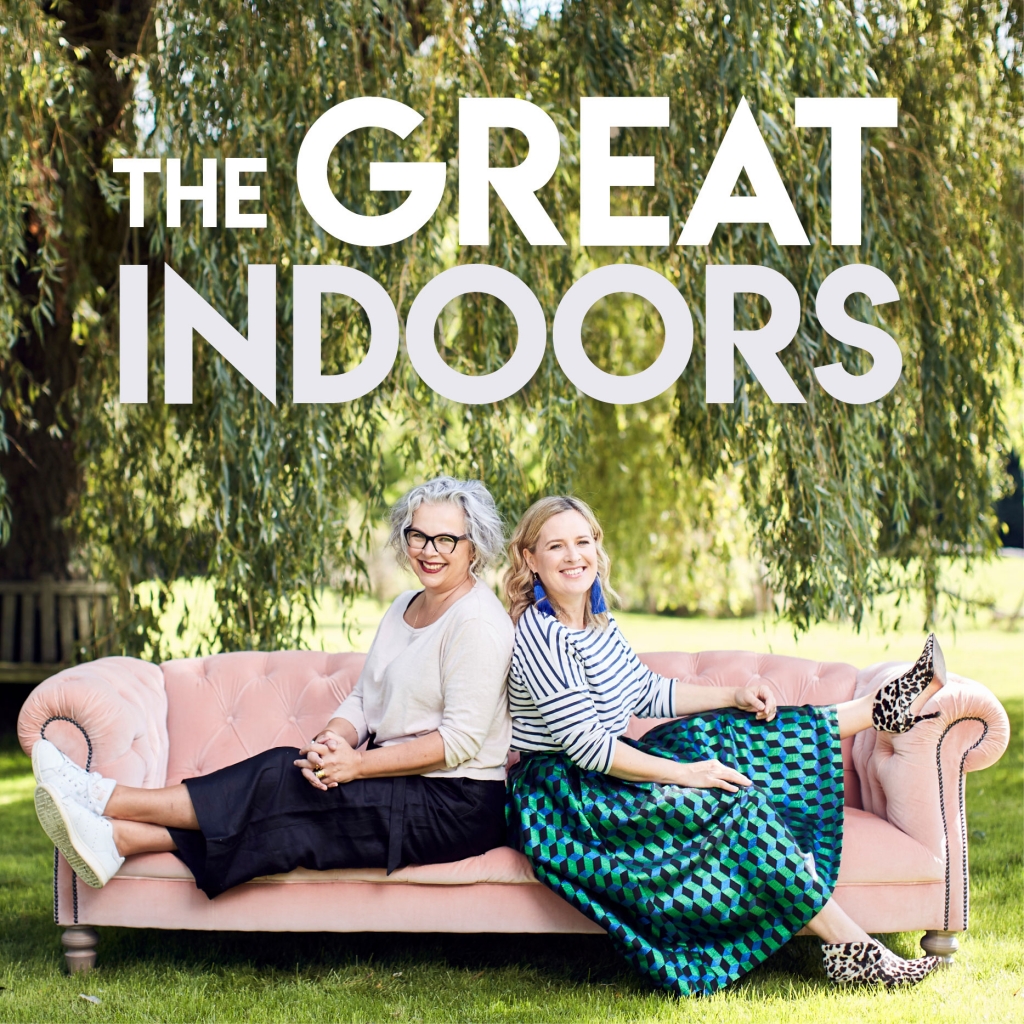Everything you need to know about Eco paint

One of the questions I get asked most, is how to pick the perfect paint colour. Rolling out a new hue across your walls is a huge decision, but the added consideration is the environmental impact of your choice too. I’ll be honest, it’s a bit of a minefield, but when you acknowledge that a staggering 55 million litres of paint goes to landfill every year in the UK, there’s clearly lots of work to be done, and as serial decorators, we are in the prime position address it. The good news is that a lot of the popular designer paint brands are taking this on. The bad news is a lot of the big DIY and trade brands are not.
So what can we do?
Know what’s in your paint
First of all, it would appear that not all decorating paints are equal. Let’s get ourselves genned up on what is actually going into the paint and the claims brands are making about the contents.
- Many brands say that their paint is “water-based” which infers that it’s environmentally friendly. which to a degree it is versus the not widely used solvent based paints. In reality, today all DIY paints contains water, from emulsion to acrylic eggshells, so this isn’t something unique to a particular set of eco brands. I don’t see much reason to use solvent-based paints anymore as water-based paint technology has come on leaps and bounds in terms of durability. It’s also easier to clean the equipment with water rather than solvent cleaners.
- All brands I found claimed to be low VOC. Volatile Organic Compounds or VOCs for short are carbon-based chemical compounds found in most paints. These harmful chemicals can damage your health and the environment – they also contribute to global warming. It’s important that you know what kind of paint product is being used so make sure it has been correctly labelled with an accurate percentage figure on its label – this is in fact a legal requirement, and all DIY paints are regulated to be ow VOC.
- Most popular and designer paint brands, including ones that claim to be ‘green’ or ‘eco friendly’ are using plastic in their paints, a product of crude oil and fossil fuels. And if that ends up in landfill, like all plastic, its going to hang around for hundreds of years- all 55 million tins a year of the stuff!
- Natural paint brands use natural ingredients, no plastics, artificial fillers, polymers, vinyl chloride, acrylic softeners, plasticisers or formaldehyde. These are the brands to look out for if you want to be truly eco friendly in my view.
Headline here is all DIY paint is water-based, low VOC, quick drying, and heavily regulated to be low toxic and breathable. All the big trade brands and budget DIY paints fufill this criteria. My argument is that for a brand to claim to be ‘eco friendly’ and ‘sustainable’ as part of their marketing, they need to show they do much more than the basics required by law.
Don’t buy more paint than you need
With the difficulty in disposing of paint, plus the fact it cannot be recycled (see Little Green remix strategy later on in this post) it makes total sense to only order as much paint as you need. You can use online calculators to help work out the exact amount – so don’t estimate! Yes Colours have a brilliant initiative to use 1 ltr plastic pouches to deliver their paint, cutting down on packing and making your paint ordering more accurate.
Buy once
Of course you want to get the colour right, but use tester pots to make sure rather than wasting a big tin of paint if you make the wrong choice. Paint a large piece of paper/card and move it around to see how it reacts with natural and artificial lights. Use leftover tester pots for small projects – up-cycle a small piece of furniture. Brands like Lick have ditched tester pots in favour of large paper swatches they post out, to cut out wasting paint. And if on delivery tins are dented or damaged- don’t send them back if there is nothing wrong with the paint inside! It’s only the packaging afterall.
Buy high quality durable paint
On the basis that we can make a difference by using less paint altogether, buying a quality product that holds the look, colour and surface for longer means less decorating over time. The Farrow & Ball Modern Emulsion has recently won a Which? award for best buy in washable paints. It offers the perfect balance between durability and cleanup, making it a top choice
Storing and disposing of paint
Leftover paint doesn’t keep, so if you are hoarding tins of the stuff under the stairs, save yourself the space and dispose of it by taking it to your local tip or recycling centre. Paint is not to be poured down the sink or drains which makes recycling the tins an issue. If you have paint left over after a project- pass it on by offering it up for free on Gumtree or Facebook marketplace or your neighbourhood app Nextdoor. Community RePaint – is an organisation sponsored by Dulux that collects and re-distributes reusable leftover paint to community groups and those in social need. They will only accept fresh paint.
Tins rust and ruin the paint so when storing paint for touch-ups decant into a glass jar and store the lid down in a cool part of the house. Avoid hot or extremely cold temperatures which will accelerate corrosion rates exponentially!
If your paint is very old and unusable or you can’t pass it on to someone else, make sure your paint is hardened before you take it to a recycling centre. Remember that paint cannot be chucked into your household bin and can not be poured down the drain where it can cause damage, and blockages and think about where it may end up. When decorating use a plastic bag in the paint kettle or rolling tray so when the job is finished you can roll up the paint ready for disposal without having to wash it down the sink. Saves a messy job too!
As for the containers, many brands claim their metal paint tins are recyclable. Unless you are emptying the tin entirely of paint (and you cant just wash it down the drain remember) tins with left over paint in them, are not recyclable. Another reason to not not buy more paint than you need and a positive for the Yes Colours small plastic pouch solution perhaps.
Can you recycle paint?
In a word, no. If you return mixed paint to a brand, it will be going into landfill. If you take it to your local recycling centre, it’ll be going into landfill. To tackle this problem ‘Re:mix’ by Little Greene is a genius new paint collection which has turned unwanted and returned paints into a matt finish for interior walls. This process prevents 60 thousand litres of high-quality mineral raw materials from going to waste every year. The paint is the same quality and performance as the premium mixed-to-order range but is sold for around half the price. Colours are limited to what’s available depending on the market.
ECO PAINT DIRECTORY
Here is a round up of just a few of the brands available in the UK and what they are saying they are doing to address the problems, based on whats published on their websites for us all to see. There are some commonality and differences in the ways they are tackling the environemental impacts of their products. . I’ve ignored all the claims that say they are water based, low VOC, low odour and quick drying. Just take that as pretty standard across all paint brands.
I found very little information on the big brands like Dulux, Valspar, B&Q, Crown et al. I’s also be wary of paint brands that claim to be ‘eco’ or ‘sustainable’ but offer up little information beyond being water based or low VOC to back that up in a meaningful way. It’s still hard work for the consumer to find out what is in the paint and what the companies are doing to address the environmental impact of their paints but I hope this blog post gives you an overview of those brands aiming to make positive change.
18g of plastic cleaned from oceans per tin sold
No animal testing
100% vegan
Durable & washable
Made to order batches to reduce waste
Peel-and-stick swatches make it easy to try your favourite colours

Plant power by Coat
Not tested on animals
Vegan
Peel-and-stick swatches make it easy to try your favourite colours
100% solvent-free paints
Recyclable products & packaging
Sustainable bamboo supplies
Made fresh, zero-waste production
Carbon Neutral business
Oil-based paints have been reformulated using sustainable vegetable oils, without compromising on quality
Paint tins are made using over 50% recycled steel and can be recycled again
All paints and wallpapers are manufactured in the UK and source suppliers who can match the commitment to local industries.
Re:Mix range utilising waste paint and keeping it out of landfill
0% VOCs
0% microplastics
Vegan and cruelty-free
1 Litre size so you can more accurately order what you need.
Flexible pouch packaging that is more widely and easily recyclable than the standard tin.
Zero VOCs
3X More Pigment than Other Paints and Free of all Solvents
No vinyl chloride, acrylic softeners, plasticisers or formaldehyde
Claypaint totally free from acrylics and vinyl.
Carry a range of titanium dioxide-free colours and avoid known allergens.
Highly breathable, in particular the moisture absorbing qualities of Claypaint, helps even out the humidity in a room, making for a healthier, more comfortable living environment.
Pioneering Plant Based natural Paint
Declare every ingredient in the paint. No solvents, plastics or petro chemicals
Mix paints simply using the twelve natural earth and mineral pigments which have been used by artists for centuries
Paint is microporous which means it allows walls and woodwork to breathe naturally.
Virtually solvent free
Use natural earth pigments making colours rich as well as eco-friendly.
Marble Matt Emulsion – their signature paint finish – opacity, requiring less paint to achieve the desired look
Intensely pigmented
Breathable
Plastic free
Free from solvents (and their components).
One of the first eco-friendly paint companies in the UK
Uses Graphene – a material made from carbon creating greater toughness, flexibility, strength and uniformity
Products are based on lime – a natural and organic product free of VOCs and formaldehyde
Breathable with a high pH, which prevents the appearance of mould and fungus.
Lime-based products absorb CO2 from the air during the drying process.
Paints and coatings have a series of certifications, such as C2C Health GOLD, GreenTag Health GOLD and Sensitive Choice Blue Butterfly
Infinitely recyclable tins (if you clean them!)
Responsibly sourced ingredients
Every paint scores A+ for the French Indoor Air Quality Decree N° 2011-321f
Cruelty-free
I am not an authority on eco paint but I hope this will help guide you and hopefully inspire you to add more colour to your life! If you have found any brands who are tackling the issues, please add them to the comments below so we can keep this directory up to date.
Image at top: Yes Colours









![Can you believe this unexpected May sunshine? It’s giving me total garden party vibes, and with that in mind here’s how i set the table outdoors, in my maximalist style!
- [ ] Layered pattern textiles , joyful colours, coloured glass, and flowers spilling over with abundance… because when the sun shines in spring, it calls for a table that celebrates more is more.
Everything here is from my new collection with @dunelmuk where i worked to create a collection that you could effortlessly mix and match and that way you can be creative and make it your own style statement. From furniture to able ware, textiles to glassware it’s a full more is more collection! Let’s hope that sun keeps shiny as i think we are in for a beautiful summer!](https://scontent-man2-1.cdninstagram.com/v/t51.71878-15/491421194_626153067120232_3100660680364730111_n.jpg?stp=dst-jpg_e35_tt6&_nc_cat=102&ccb=7-5&_nc_sid=18de74&_nc_ohc=SfHgTUM3xsIQ7kNvwEBBM6-&_nc_oc=AdkUSW-VAibKZRo2SCS6eWyQ309d_O4rnbDhH5GNeHbpIUnaD2gXycrPW4JNTN7rlzH6XyifDr-OhqJ9fIp4nR6E&_nc_zt=23&_nc_ht=scontent-man2-1.cdninstagram.com&edm=AM6HXa8EAAAA&_nc_gid=9cLzuOAT25-M-PvQ8NwBnw&oh=00_AfLmTSC7CrELIXm0podfyOw5ihYYNctTN1RtGi2yazNb9A&oe=681F25D9)
 After
From beige to boom! My bathroo
After
From beige to boom! My bathroo





